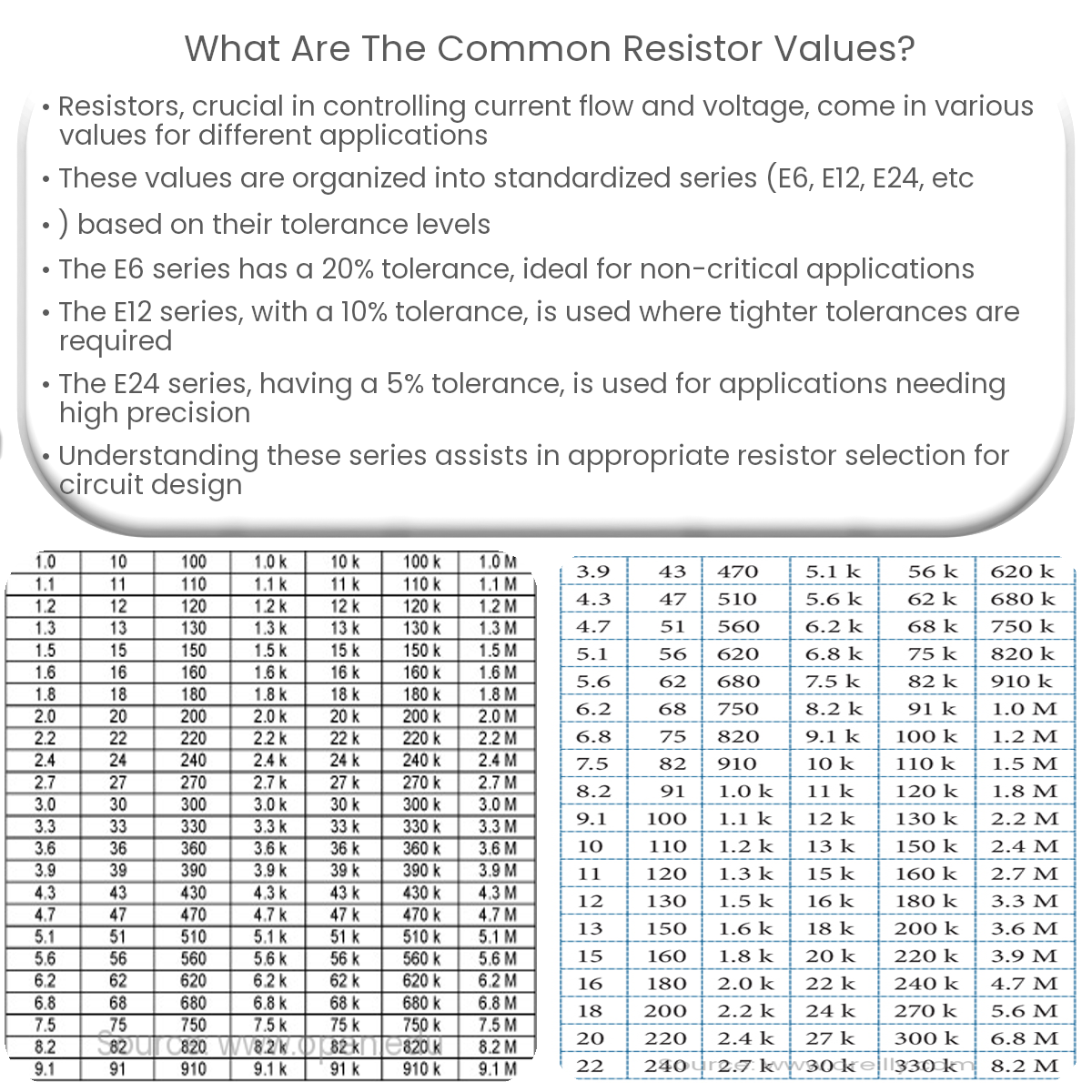Common resistor values are organized into series (E6, E12, E24) based on tolerance. They provide a balance between value selection and cost.
Understanding Common Resistor Values
Resistors are fundamental electronic components used to control current flow and voltage in a circuit. They are available in a wide range of values to accommodate various applications. In this article, we’ll discuss common resistor values and their significance in circuit design.
Preferred Resistor Series
Resistor values are organized into standardized series based on their tolerance. These series include the E6, E12, E24, E48, E96, and E192. The number in each series represents the number of values per decade (factor of 10) available within that range. The most commonly used series are E6, E12, and E24, as they offer a good balance between value selection and cost.
E6 Series (20% Tolerance)
- 1.0, 1.5, 2.2, 3.3, 4.7, 6.8
The E6 series is the most basic, with a 20% tolerance. It is suitable for non-critical applications where precision is not crucial.
E12 Series (10% Tolerance)
- 1.0, 1.2, 1.5, 1.8, 2.2, 2.7, 3.3, 3.9, 4.7, 5.6, 6.8, 8.2
The E12 series offers a 10% tolerance and is commonly used in general-purpose circuits where tighter tolerances are required compared to the E6 series.
E24 Series (5% Tolerance)
- 1.0, 1.1, 1.2, 1.3, 1.5, 1.6, 1.8, 2.0, 2.2, 2.4, 2.7, 3.0, 3.3, 3.6, 3.9, 4.3, 4.7, 5.1, 5.6, 6.2, 6.8, 7.5, 8.2, 9.1
The E24 series has a 5% tolerance and provides a wider range of values. It is often used in applications where greater precision is needed.
Multiplier
Resistor values within each series are multiplied by factors of 10, known as decades. For example, a 10Ω resistor in the E12 series can be found in the following values: 10Ω, 100Ω, 1kΩ, 10kΩ, 100kΩ, and so on.
Conclusion
Common resistor values are organized into series based on their tolerance, with E6, E12, and E24 being the most widely used. Understanding these series and their values helps in selecting appropriate resistors for circuit design, ensuring proper operation and performance.


